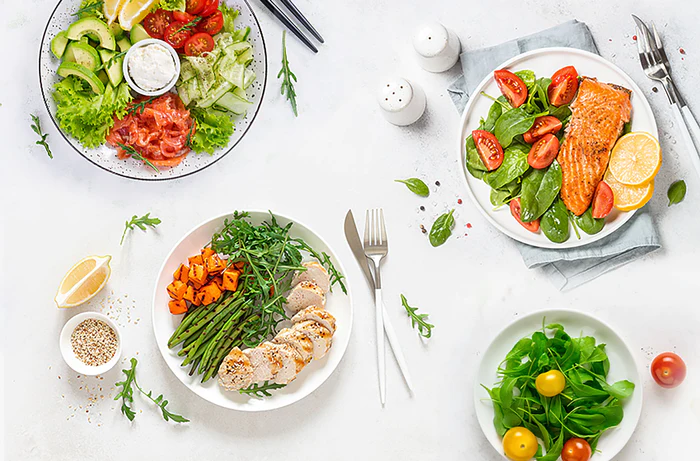I was reading a recent article in Business Insider about the New England Patriots' quarterback, and his diet as explained by his personal chef: Here is what Tom Brady eats to stay in peak condition at an age most players retire. As far as I can gather from the limited information provided in the article, it certainly appears that Tom Brady’s chef is trying to follow the Zone Diet.
What's Cooking? And Does the Math Work?
I said "appears" since I am sure that his personal chef is a better cook than he is a nutritionist. For instance, he states the diet followed by Tom Brady is 20% protein and 80% carbohydrate (i.e., whole grains and vegetables). Where’s the fat? The last time I checked, grass-fed beef and salmon contain a lot of fat. Furthermore, how is the percentage of protein and carbohydrate calculated? Is it by weight, volume, or calories? The chef then states that canola oil turns into trans fat when heated. Trans fatty acids are only made with hydrogenation at high temperatures in the presence of a nickel catalyst.
At least the chef gets back on track by stating he only recommends vegetables that are anti-inflammatory. I guess that means he is recommending an anti-inflammatory diet for Tom Brady. But isn’t the Zone Diet an anti-inflammatory diet? According the scientific literature, it certainly is (see references below). So let’s do some simple calculations to determine how close Tom Brady’s diet is to the Zone Diet and then ask if Tom Brady is actually in the Zone.
Let’s start with the percentages of macronutrients. I will assume that 30% of his calories are coming from fat. That leaves 70% of his calories coming from the combination of protein and carbohydrate. Since it is unlikely the chef is discussing calories, I assume he is talking about the volume taken up by each on a plate. Assuming gram for gram the protein and carbohydrate are the same, since vegetables are the primary source of carbohydrates, they will have about 3.5 times the volume as that same amount protein (like grass-fed beef and wild salmon). That would make the caloric balance of carbohydrate to protein being about 1.3 to 1. Do the math: this would mean that 40% of the calories are coming from low-glycemic load carbohydrates, 30% from protein, and 30% from fat. Just like the Zone Diet.
But how many calories is Tom Brady potentially consuming? That will depend on his lean body mass. According to ESPN, Tom Brady is 6’4 and weighs 225 pounds. Assuming he has 15% body fat (typical for an NFL quarterback), then he has a lean body mass of 191 pounds. Based on the playing time of an NFL player during the season, I estimate his protein requirements would be 0.8 grams of protein per pound of lean body mass. All of this comes from my first book, The Zone, which was published when Tom Brady was still in high school. Multiplying 191 pounds of lean body mass times 0.8 equals about 150 grams of protein per day to maintain his muscle mass. To consume this amount of protein (assuming 30% of his total calories are coming from protein) suggests his total caloric intake would be 2,000 calories per day. This calorie consumption is well in the range of the elite athletes I have personally worked with and who have won 25 Gold Medals in the past five Olympics—several who were older than Tom Brady!
From the Zone to the Endzone
So at first glance it certainly appears that Tom Brady’s chef is following the Zone Diet. But the real question is whether Tom Brady is in the Zone? That you can only tell from blood testing. The Zone is not some mystical place, but a real physiological state determined by clinical markers routinely used by Harvard Medical School. The three clinical tests that define the Zone are:
- The AA/EPA ratio, which is a marker of inflammation.
- The TG/HDL ratio, which is a marker of insulin resistance.
- The levels of HbA1c, which is a marker of long-term blood sugar control.
If you really want peak performance and longevity, here is what the numbers should be:
- AA/EPA ratio: 1.5-3
- TG/HDL ratio: <1
- HbA1c: 5.0%
This is not a multiple-choice test. Either all three of the markers are in the correct ranges or you are not in the Zone.
Obviously I don’t have those numbers for Tom Brady, but this is the only way to see if any diet is working to reduce inflammation. Unless you have reached each of these clinical markers you can’t be considered well, no matter how good you look in swimsuit or football uniform. This is why there is no perfect diet for everyone (although I believe the Zone Diet is the easiest way to get to the Zone and stay there), but there is a perfect set of clinical markers that can only be reached by the diet. If those clinical markers aren’t in the Zone, simply continue to adjust your diet until all three clinical markers are in correct ranges.
So here is my prediction: If Tom Brady is actually in the Zone, then it is likely he will be able to play NFL football into his 40s, and he'll spend more time throwing passes into the endzone.
Original story, Meet the chef who decides what Tom Brady eats—and what he definitely doesn’t, appeared in boston.com on January 4, 2016, and was reported and written by Hilary Sargent.
References:
- Pereira MA, Swain J, Goldfine AB, Rifai N, and Ludwig DS. “Effects of a low-glycemic load diet on resting energy expenditure and heart disease risk factors during weight loss.” JAMA 292: 2482-2490 (2004).
- Pittas AG, Roberts SB, Das SK, Gilhooly CH, Saltzman E, Golden J, Stark PC, and Greenberg AS. “The effects of the dietary glycemic load on type 2 diabetes risk factors during weight loss.” Obesity 14: 2200-2209 (2006).
- Johnston CS, Tjonn SL, Swan PD, White A, Hutchins H, and Sears B. “Ketogenic low-carbohydrate diets have no metabolic advantage over nonketogenic low-carbohydrate diets.” Am J Clin Nutr 83: 1055-1061 (2006).
- Sears B. The Zone. Regan Books. New York, NY (1995).






Let Us Know What You Thought about this Post.
Put your Comment Below.